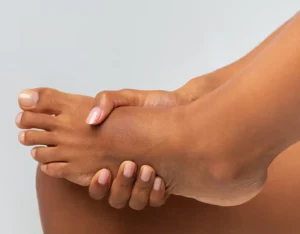Veins have the task of transporting deoxygenated blood back to the heart. They are part of a complex system that runs both superficially in our legs and deep in the muscles. In a healthy person, the blood flows from the superficial to the deep veins and from the smaller to the larger veins. The direction of flow is therefore from the bottom to the top and from the outside to the inside before the blood leaves the leg in the direction of the heart.
Muscles as a motor
As this return transport takes place against the force of gravity, a certain amount of muscle strength is required. The vein wall itself is not equipped to do this. This is why the task is performed by the so-called muscle pump in the foot, calf and thigh. However, it can only work if the venous valves are functional and open and close like valves. This prevents the blood from flowing back under the force of gravity.
From flap to flap
In a healthy leg, the blood is transported step by step towards the heart. This happens through pressure and requires that the venous valves, which lie one behind the other, close precisely and work together. After each pressure wave, which occurs, for example, when changing position from lying to standing, the blood “falls” back to the next venous valve as far as possible.
Weaknesses in the system
Vein dilation is normal when temperatures rise. The intact venous system compensates for this phenomenon so that no congestion or orthostatic problems arise. However, it becomes problematic if the dilation is due to connective tissue or vein wall weakness. In this case, the venous valves no longer close properly, the blood flows in the wrong direction, “sinks” – and eventually accumulates in visible varicose veins.
Continue reading: Varicose veins: A widespread disease and its causes




